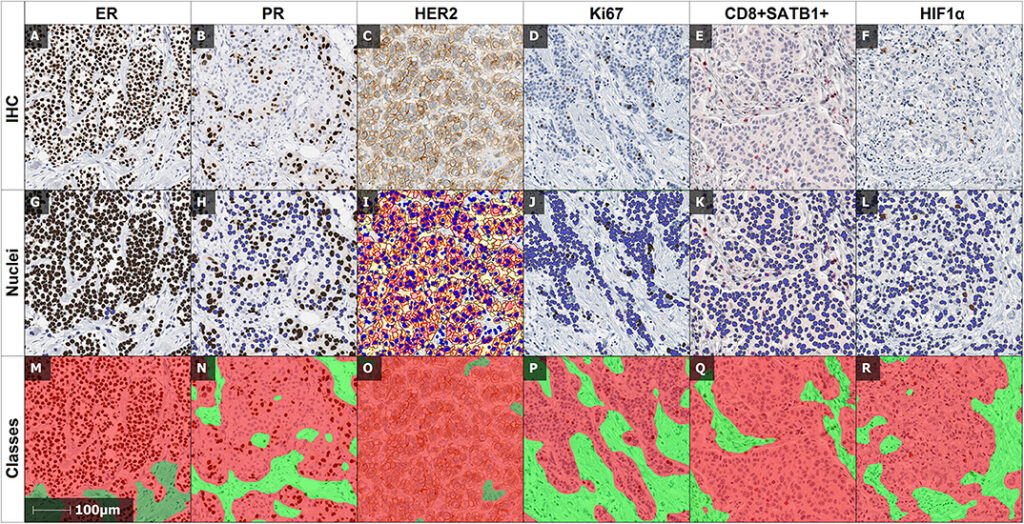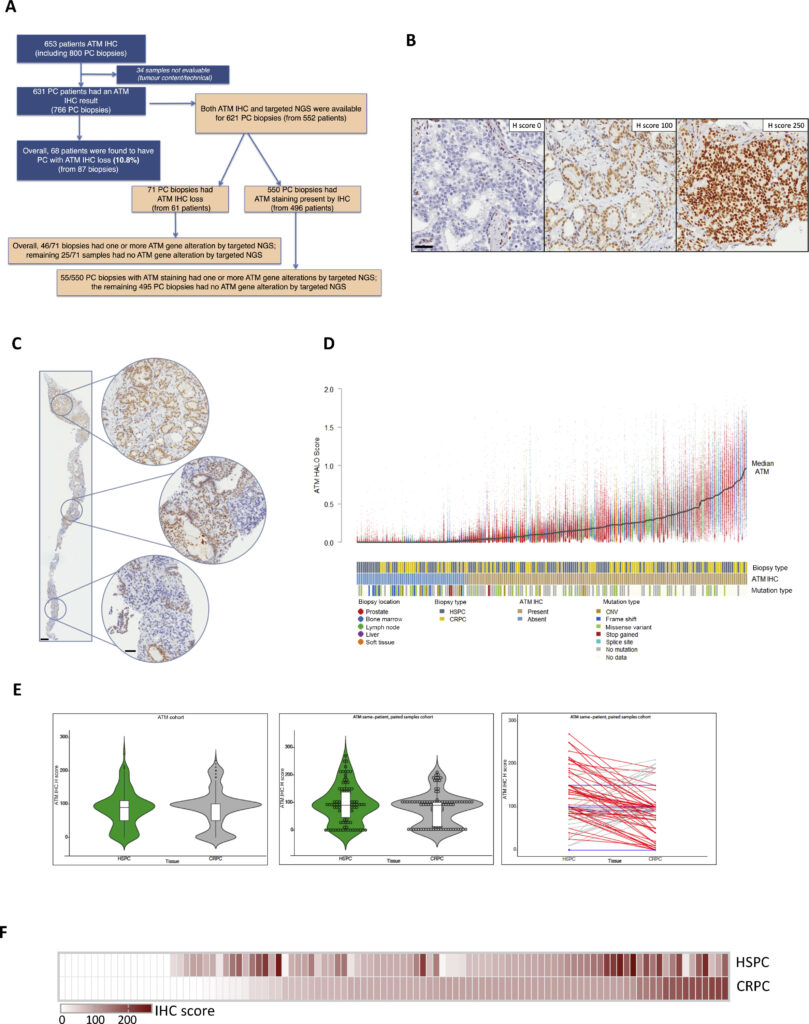Tumoral PD-1hiCD8+ T cells are partially exhausted and predict favorable outcome in triple-negative breast cancer
Liang Guo, et al, Clinical Science, 2020
Prior to this publication it was known that dysfunctional PD-1hi CD8+ T cells infiltrated tumors, although it was unknown if this phenotype played a role in triple-negative breast cancer (TNBC). Guo et al set out to explore this phenotype in triple-negative breast cancer and using HALO and HALO AI demonstrated using both quantitative multiplexed immunohistochemistry and multispectral fluorescence imaging that PD-1hi CD8+ T cells were found in TNBC patient tissue biopsy core analysis but largely absent from peripheral blood. Molecular analysis of these cells revealed expression of biomarkers associated with T-cell exhaustion and the authors hypothesize that this cellular phenotype could be useful for future stratification and as a prognostic marker in TNBC patients as the presence of PD-1hi CD8+ T cells are associated with favorable outcomes. In addition, future research with this cellular phenotype may provide opportunity for therapeutic advancement in TNBC, a challenging subtype of breast cancer to treat.









